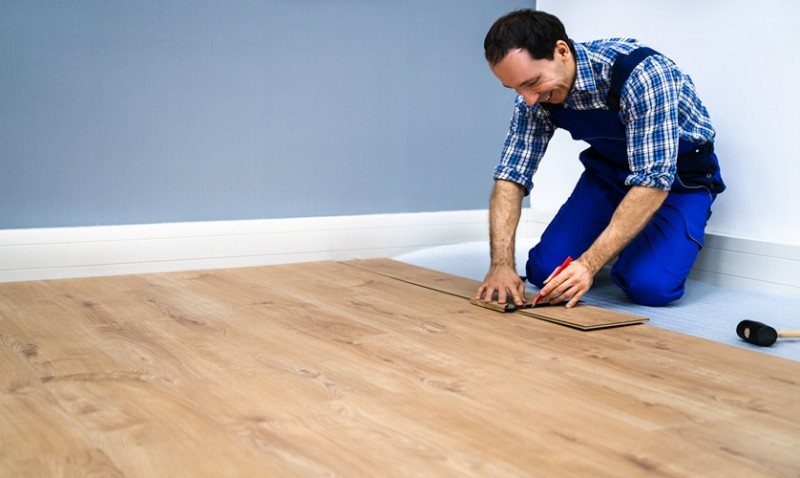
If you've spent any time researching wood finishes, the name Rubio Monocoat has likely popped up. A long-time favourite among floor finishers, furniture makers, and DIYers, it’s known for its single-coat application and stunning natural look. But – the game has changed.
In recent years, a wave of new hardwax oils have emerged onto the UK market, offering improved performance, comparable ease of use, and in many cases, better value for money. From small-scale makers to major European brands, the hardwax oil category has exploded with innovation, challenging the dominance of the once-untouchable Rubio Monocoat.
So whether you’re a homeowner updating your oak flooring, a designer recommending finishes for a new kitchen, or a professional joiner looking to streamline your process, you're in the right place. In this post, we take a detailed look at how today's top hardwax oils stack up – and which one might be just right for your next project.
What is Hardwax Oil and Why is Everyone Using It?
Hardwax oil is a penetrating wood finish that offers the durability of traditional varnishes and polyurethanes, without creating the plastic-looking “film” that can obscure the natural texture and depth of wood. These finishes are made from natural oils (like linseed or tung) paired with waxes, creating a breathable surface that enhances the grain and resists water, dirt, and everyday wear.
Unlike lacquers or polyurethanes that sit on top of the wood, hardwax oils soak into the fibres, hardening from within and forming a more natural, matte finish. They’re popular among design-savvy homeowners, architects, and tradesmen for their warm aesthetic and eco credentials.
Many hardwax oils are also VOC-compliant, food safe when cured, and easy to maintain or reapply without sanding – perfect for anything from floors and countertops to custom joinery and furniture.
The Contenders: Popular Hardwax Oils in the UK Compared
Below is a direct comparison of some of the leading hardwax oils available in the UK market in 2024. We've looked at ease of application, durability, appearance, price, and ideal use cases.
| Brand | Product Name | Coats Required | Cure Time | Finish Options | Approx. Price (1L) |
|---|---|---|---|---|---|
| Rubio Monocoat | Oil Plus 2C | 1 | 21 days (80% cured after 48h) | Over 50 colours | £90 – £100 |
| Osmo | Polyx-Oil Original | 2 | 8–10 days full cure | Matte, Satin, Gloss | £30 – £40 |
| Blanchon | Hard Waxoil Original | 2 | 5–7 days | 8 colour tones | £40 – £50 |
| Fiddes | Hard Wax Oil | 2 | 5 days | Clear / Tinted | £25 – £35 |
| Saicos | Premium Hardwax-Oil | 2 | 4–5 days | Multiple finishes | £30 – £40 |
As you can see, Rubio Monocoat still impresses with its single-coat convenience and wide array of colour options — great for custom interiors. However, that convenience comes at a premium. Brands like Osmo and Fiddes offer excellent durability and aesthetics at a fraction of the cost, albeit with a second coat usually needed.
What Has Changed in the Game?
While Rubio’s one-coat magic and colour depth made it a gold standard for years, things have shifted. High-value options from Fiddes and Blanchon now deliver equally compelling finishes without the sticker shock. Meanwhile, improvements in VOC compliance and drying time among Osmo, Saicos, and others have narrowed the performance gap.
Moreover, brands have started offering eco-focused and quick-drying formulas, responding to professionals’ demands for faster turnaround times without compromising artisanal quality. Some new products can be buffed to a deeper sheen or layered for greater durability, options that Rubio can sometimes limit due to its strict application needs.
Application Experience: DIY vs. Professional Perspective
From a DIY standpoint, easy application is key. Rubio appeals with its one-and-done message, but the reality is that it requires meticulous surface prep, precise ratios (Part A & Part B), and consistent rag wiping – not exactly beginner-friendly.
Products like Osmo or Fiddes are more forgiving: just brush or roll on, wait, and buff off excess. The re-coat window is wide, and touch-ups are seamless. For the average DIY enthusiast, these features mean much less stress and a more consistent finish without professional experience.
Tradespeople and renovation pros, on the other hand, might appreciate the control Rubio offers – especially when colour matching bespoke joinery pieces. But for floors and larger surfaces? Many applicators now prefer faster, more traditional two-coat oils that deliver consistency without the margin for mixing error.
How to Choose the Right Hardwax Oil for Your Project
When picking a hardwax oil, consider the context:
- Floors or high-traffic surfaces? Choose something speedy and durable – Fiddes or Osmo are both great.
- Lots of timber variation or a specific design vision? Rubio’s unique colour range shines.
- Tight timeline? Blanchon and Saicos offer fast drying and reliable wear resistance.
- Eco concerns? Most brands now promote low-VOC and child-safe credentials. Look for certification like EN71 or DIN53160.
Also consider your comfort level: if you’re new to finishing wood, a two-coat system with flexible application might give you the best outcome.
Final Thoughts: There’s More Than One Winner
The hardwax oil landscape in the UK has never been more dynamic. While Rubio Monocoat remains a premium choice with serious visual impact, it’s no longer the automatic pick for every project.
With a variety of application options, price points, and performance specs now on offer, there truly is a hardwax oil for every level of user and every type of wood surface. Whether you prioritise aesthetics, budget, sustainability, or speed, the right finish can transform your wood and elevate your space.
So don’t just follow the crowd. Explore your options, test a few samples, and see which oil plays best with your wood and your workflow. Because in 2024, the game really has changed – and that’s a win for all of us.






